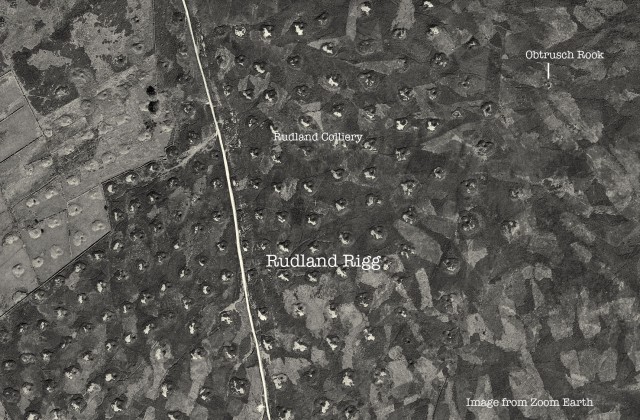Chris and I left the stone circle on Harland Moor and headed north across the open moorland onto Rudland Rigg. We’d noticed that the ground was disturbed on the lower moor with numerous small pits but as we moved up onto the higher moor we began to notice large mounds running across the moor.
The mounds are the remains of the Rudland Colliery. Coal mining was carried out across the moors for more than three centuries. There were small collieries exploiting thin seams extending from Crathorne in the Tees valley to Whitby on the coast. The moorland coal is found in thin seams between five and nine inches thick in the Middle Jurassic formations. The coal is poor in quality but is suitable for burning in limekilns and for domestic use. The production of lime was a seasonal activity so the mining was done by small groups of men who also had small holdings or worked in other industries during the winter months.
Cobble Hall Limekilns
The coal was initially mined by digging small pits and extracting the deposits that were close to the surface, as can be seen in the area around the stone circle. Once shallower deposits had been exhausted, deeper shafts giving access to underground interconnecting galleries were sunk. With no means of ventilation and the difficulty of moving materials through the galleries, a series of shafts were sunk with a pillar of no less that one yard left between shafts to support the roof. These shafts are commonly known as Bell Pits.
The coal was removed from the pit by a hand operated windlass or a horse powered winch known as a Gin.
The Rudland colliery is comprised of 270 pits running in lines across the moor, other collieries in the immediate area were the Upper Rudland (140 pits), Harland Head (60 pits), and Swinakel (19 pits).
Unlike the other extractive industries of the moors such as Jet, ironstone mining and alum production, coal mining on the moors was only of local importance. It was however an important part of the local economy. The Lime was needed to improve the fertility of the soils especially the acidic soils of the northern dales.
Source






